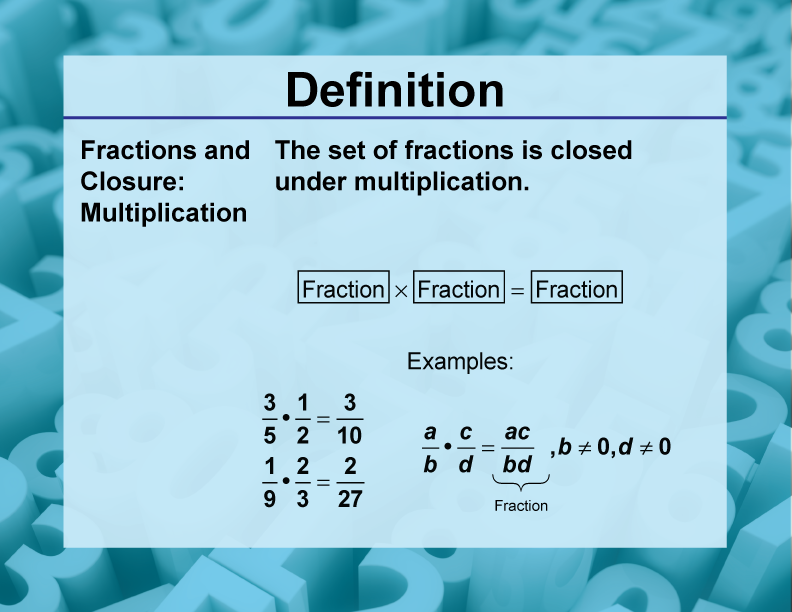
Display Title
Definition--Closure Property Topics--Fractions and Closure: Multiplication
Display Title
Fractions and Closure: Multiplication

Topic
Math Properties
Definition
The closure property for multiplication of fractions states that the product of any two fractions is always another fraction.
Description
The closure property for multiplication of fractions is a fundamental concept in mathematics that illustrates the consistency and completeness of the fraction number system. This property ensures that when we multiply any two fractions, the result is always another fraction, keeping us within the same number system.
Understanding this property is crucial for students as they develop their skills in fraction arithmetic. It provides a logical foundation for more complex operations and helps in solving real-world problems involving fractions, such as in area calculations, probability, or scaling in various applications.
Algebraically, we can express this property as: For any fractions a/b and c/d (where b and d are not zero), (a/b) × (c/d) = (ac)/(bd), which is also a fraction. This algebraic representation helps students transition to more advanced mathematical concepts and abstract thinking, preparing them for algebra and calculus.
Teacher's Script: "Let's multiply two fractions: 2/3 and 3/4. We multiply the numerators and denominators separately: (2/3) × (3/4) = (2×3)/(3×4) = 6/12 = 1/2. See how our result is still a fraction? That's the closure property in action! Can you think of any two fractions that, when multiplied, don't give you another fraction?"
For a complete collection of terms related to the Closure Property click on this link: Closure Property Collection.
| Common Core Standards | CCSS.MATH.CONTENT.HSN.RN.B.3, CCSS.MATH.CONTENT.HSN.CN.A.2 |
|---|---|
| Grade Range | 9 - 12 |
| Curriculum Nodes |
Algebra • The Language of Math • Numerical Expressions |
| Copyright Year | 2021 |
| Keywords | Closure Property |